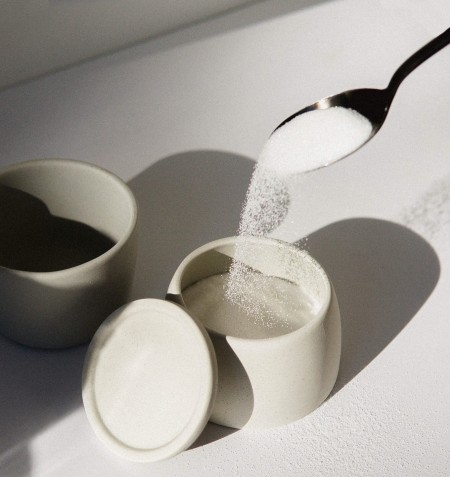Publish date: 1 September 2021
Watch out…hidden sugars about! By mouthcare lead dental nurse and trainer, Paula Darkin

Hidden sugars are ingredients in food and drink and although they are not seen as ‘sugar’, they can still cause tooth decay.
Some sweet-tasting foods don’t have the word ‘sugar’ in the ingredients list on their packaging, but still have sugar in them – it’s just labelled in a different way. For example, it may say: ‘dextrose, sucrose, maltose, fructose, lactose, glucose, honey or modified starch’.
Some food labels have traffic light coloured labels to show the sugar content. Choose more greens and ambers, and fewer reds.
What types of food and drink contain these hidden sugars?
Sweet offenders:
Low-fat dairy
Dairy that’s had the fat removed sometimes needs to have something else added to replace the missing flavour, in most cases this is sugar, such as in low-fat yoghurt.
Cow’s milk, full-cream and skimmed milk usually have similar levels of lactose, whereas with plant-based milks, such as soy or almond milk, the regular and flavoured versions have added sugar so it’s best to choose the unsweetened alternatives.
Bread
When baking bread, sugar is added in the fermentation process as starch is broken down and ingested by yeast, this is what causes bread to rise. Sugar may also be added to improve taste and texture, it also helps create a golden crust.
Wholemeal bread also often has added sugar to counteract the bitter flavour of whole wheat, so if it comes in a packet, check if there’s been sugar added.
Sauces
Tomato, barbecue, salad cream and sweet chilli sauces are some of the worst condiment choices when it comes to added sugars, containing anywhere up to two teaspoons of added sugar per 15ml serve. Again, if sugar is appearing in the first three-to-four ingredients on the list, it most likely is a sauce with far too much added sugar.
Cereal
People often don’t realise that ‘healthy’ cereals like muesli and granola can be high in sugar. They’re frequently sweetened with honey and maple syrup, or dried fruits such as sultanas.
Crackers
Despite being thought of as a savoury snack, crackers are actually frequently enhanced with added sugars to improve their flavour. Try to avoid strongly flavoured crackers, and opt for plain rice crackers, corn thins or rice cakes instead.
Baked beans
Beans are a fantastic source of fibre and protein, but when packaged as baked beans in a tin, they unfortunately also feature a high amount of sugar in the tomato sauce, with a serving containing up to one-to-two teaspoons of added sugar.
Sushi
When sushi is being prepared, sugar is added to the rice to enhance the taste, with up to a tablespoon being included into a cup of sushi rice in some cases. Be mindful of this when ordering at restaurants, or when making at home, reduce the amount of sugar you use.
Also limit the amount of sauces you choose, such as teriyaki or mayonnaise, which can also contain a significant amount of sugar.
Be mindful
At the supermarket, look out for sugar-free and lower-sugar versions of your family favourites. Food and drinks containing sugar should be limited and are best given at mealtimes.
The Change4Life‘Food Scanner’ app shows how many calories, sugar, salt and saturated fat is in food to help make healthier choices easier. It can be downloaded from the App Storeor Google Play.
FUN FACTS
- Heinz ketchup contains one teaspoon of sugar in each one tablespoon serving.
- The average 20-ounce (600ml) cola bottle has roughly 16 cubes of sugar.
